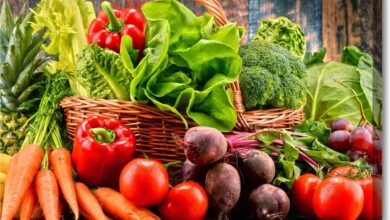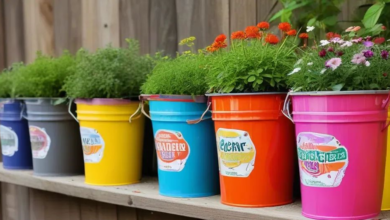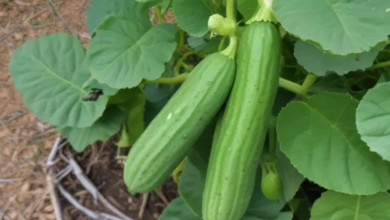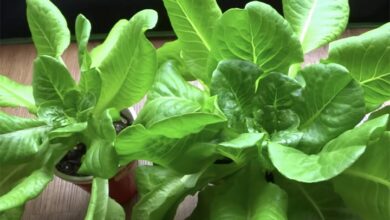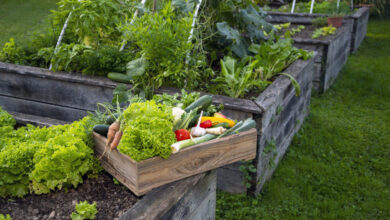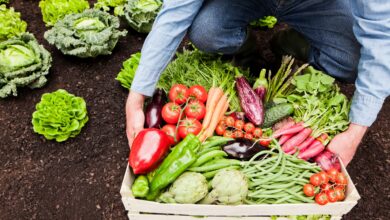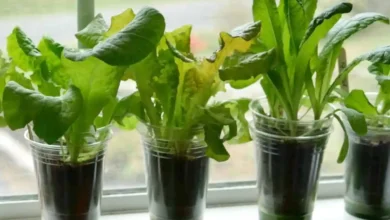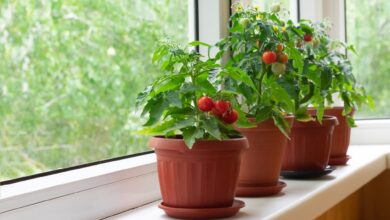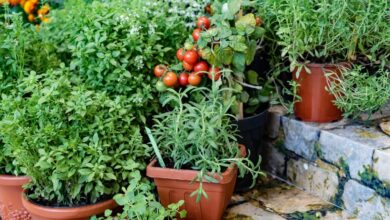15 Vegetables That Grow in Shade (No Full Sun Required)
Discover 15 shade-tolerant vegetables perfect for partial sun gardens. Learn which crops thrive without full sunlight and maximize your shaded.

Not every garden is blessed with abundant sunshine throughout the day. If you’ve looked at your yard and felt discouraged by the shadows cast by trees, fences, buildings, or structures, you’re not alone. Many gardeners face the challenge of limited sunlight and assume that growing vegetables in shade is impossible. The good news? That assumption couldn’t be further from the truth.
While it’s accurate that heat-loving crops like tomatoes, peppers, and melons demand full sun exposure to produce bountiful harvests, numerous shade-tolerant vegetables can thrive with just a few hours of direct sunlight each day. Understanding the difference between full sun, partial shade, and dappled sunlight is the first step toward creating a productive garden in less-than-ideal lighting conditions.
Partial shade typically refers to garden areas that receive 3-6 hours of sunlight daily or enjoy filtered light throughout the day. These conditions are far from limiting—they’re actually preferred by many cool-season crops that would otherwise bolt or scorch under intense summer heat. Leafy greens, root vegetables, and certain herbs actually perform better when protected from the harsh afternoon sun, developing sweeter flavors and more tender textures.
This comprehensive guide explores 15 exceptional vegetables that grow in shade, providing you with the knowledge to transform that neglected shady corner into a thriving food production area. Whether you’re dealing with the shadow of mature trees, a north-facing garden bed, or limited space between buildings, you’ll discover that shade gardening opens up unique opportunities rather than presenting insurmountable obstacles.
From crisp salad greens to flavorful herbs and nutritious root crops, these shade-loving vegetables will help you maximize every square foot of your garden, regardless of sun exposure. You’ll learn specific growing requirements, harvest tips, and practical strategies for success with each variety. Let’s explore how to turn your shaded garden into a productive oasis that yields fresh, homegrown produce throughout the growing season.
Shade Levels for Vegetable Gardening
Before selecting vegetables for shaded gardens, it’s essential to understand the different types of shade your garden might experience. Not all shade is created equal, and knowing your specific conditions will help you choose the right crops.
Full Sun vs Partial Shade vs Full Shade
Full sun areas receive 6-8 hours of direct sunlight daily, which is ideal for most fruiting vegetables. Partial shade describes locations getting 3-6 hours of sun or experiencing dappled sunlight filtered through tree leaves. Light shade areas might receive 2-3 hours of direct sun plus bright indirect light throughout the day. Full shade, receiving less than 2 hours of direct sunlight, is generally unsuitable for vegetable production, though some mushrooms can thrive here.
Evaluating Your Garden’s Light Conditions
To successfully grow shade-tolerant crops, spend a day observing your garden space. Track when sunlight hits different areas and for how long. Morning sun combined with afternoon shade is often ideal for cool-season vegetables, as they receive necessary light energy while avoiding heat stress. East-facing locations that catch morning rays work exceptionally well for leafy vegetables and greens.
1. Lettuce: The King of Shade-Tolerant Vegetables
Lettuce ranks as the ultimate shade-loving vegetable, thriving in partial shade conditions where other crops struggle. This cool-season crop actually prefers protection from intense sunlight, which can cause bitterness and premature bolting.
Growing Lettuce in Shade
Loose-leaf varieties excel in shaded gardens, producing tender leaves with just 3-4 hours of sunlight. Plant lettuce in spring and fall, spacing plants 6-8 inches apart in rich, well-draining soil. Keep the soil consistently moist, as lettuce growing in shade develops slower but produces sweeter, more tender leaves than sun-grown counterparts.
Best Varieties for Low Light
Choose loose-leaf types like Oak Leaf, Black Seeded Simpson, and Buttercrunch for shade gardening. Avoid head lettuces in limited light, as they require more time to mature and produce smaller heads. Succession planting every two weeks ensures continuous harvests throughout the season.
2. Spinach: Nutrient-Dense Leafy Green
Spinach is another champion among vegetables that grow in shade, tolerating partial sun conditions beautifully. This iron-rich green actually benefits from afternoon shade, especially during warmer months when full sun causes rapid bolting.
Optimal Growing Conditions
Plant spinach in early spring or fall when temperatures remain cool. This shade-tolerant vegetable needs 3-4 hours of sunlight and consistently moist soil. Mulch around plants to retain moisture and regulate soil temperature. Harvest outer leaves first, allowing the plant to continue producing.
3. Kale: Hardy Shade-Tolerant Superfood
Kale demonstrates remarkable adaptability to shaded conditions, producing nearly as much in partial shade as in full sun. This nutrient-dense leafy green becomes sweeter after light frost, making it perfect for fall gardens with decreasing daylight.
Varieties and Care
Lacinato (Dinosaur) kale and Red Russian varieties perform exceptionally well with limited sunlight. Plant kale 12-18 inches apart in fertile soil amended with compost. This cold-hardy vegetable can handle 3-5 hours of sun and continues producing through winter in mild climates.
4. Swiss Chard: Colorful and Shade-Friendly
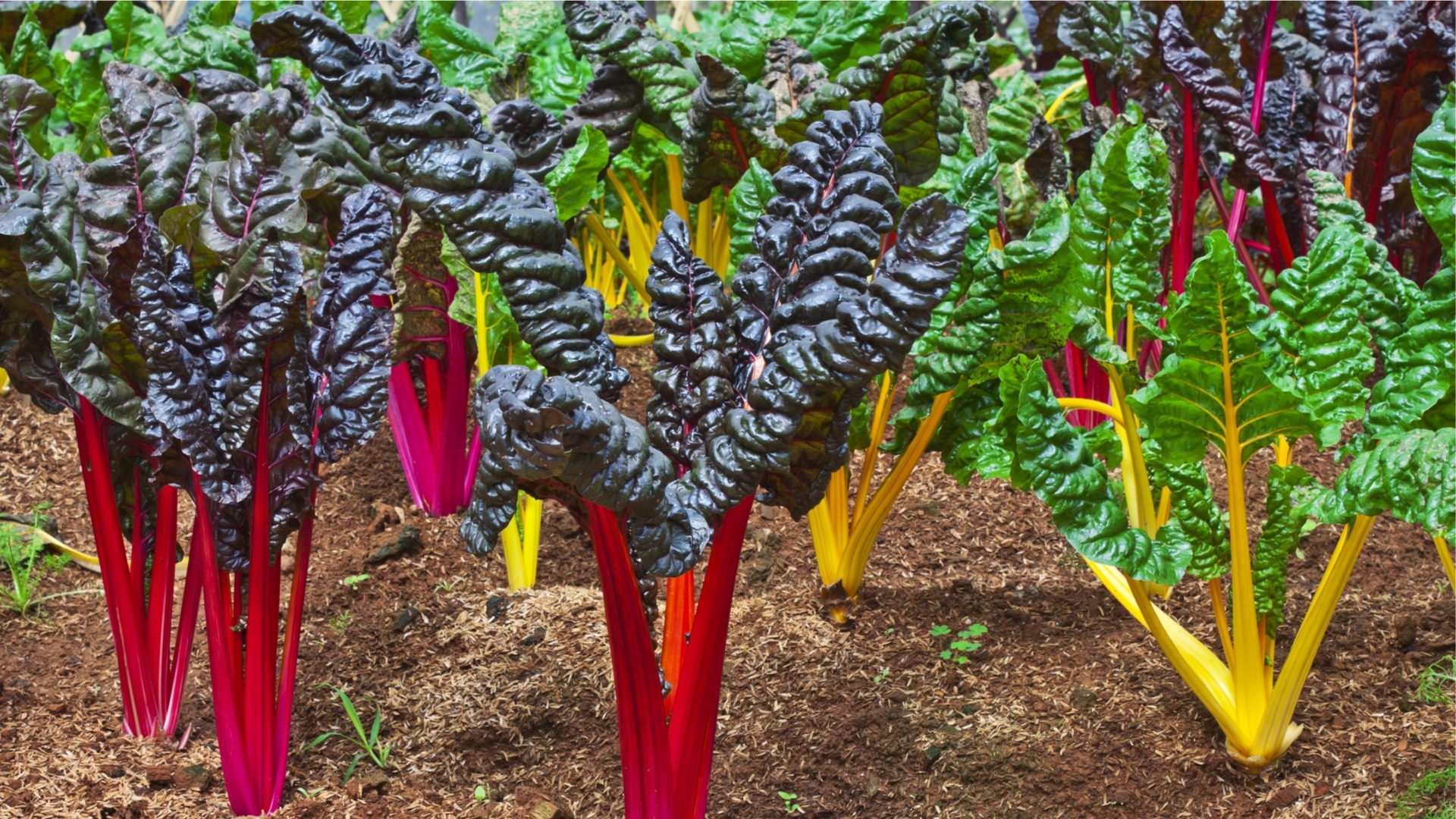
Swiss chard adds vibrant color to shade gardens with its rainbow-hued stems while tolerating partial shade conditions. This versatile leafy vegetable provides continuous harvests from spring through fall with minimal sun requirements.
Growing Tips for Success
Chard thrives with 3-4 hours of direct sunlight and appreciates afternoon shade during summer heat. Space plants 6-8 inches apart in nitrogen-rich soil. Harvest outer leaves regularly to encourage new growth. Both leaves and stems are edible, offering culinary versatility.
5. Arugula: Peppery Shade-Lover
Arugula is an ideal cool-season crop for shade gardening, developing its characteristic peppery flavor without the extreme bitterness that full sun can create. This fast-growing green matures in just 40 days with limited light.
Planting and Harvesting
Sow arugula seeds directly in garden beds with 2-4 hours of sunlight. Plant every 2-3 weeks for continuous harvests. Arugula growing in partial shade remains milder and less bitter, bolting more slowly than sun-grown plants. Harvest young leaves for the best flavor.
6. Mesclun Mix: Diverse Salad Greens
Mesclun or mixed salad greens represent multiple shade-tolerant vegetables in one convenient package. These blends typically include lettuce, arugula, endive, and other leafy crops that thrive in partial sun conditions.
Creating Your Shade Garden Salad Bowl
Broadcast mesclun seeds in shaded garden beds receiving 3-5 hours of light. Thin seedlings to 2 inches apart and begin harvesting when leaves reach 3-4 inches. Cut-and-come-again harvesting allows multiple cuttings from the same planting, maximizing productivity in limited space.
7. Broccoli: Cool-Season Brassica
Broccoli tolerates partial shade remarkably well, producing smaller but perfectly formed heads with 4-5 hours of sunlight. This cool-season vegetable actually benefits from some shade protection during the growing season.
Growing Broccoli in Low Light
Start broccoli transplants 18-24 inches apart in spring or late summer for fall harvest. This shade-tolerant crop appreciates consistent moisture and rich soil. Limited sunlight can help prevent bolting during temperature fluctuations, extending your harvest window.
8. Cauliflower: Delicate Shade-Grower
Cauliflower performs surprisingly well in partial shade, where protection from intense sun helps maintain the white color of heads. This cool-season crop requires patience but rewards shade gardeners with gourmet-quality produce.
Special Requirements
Plant cauliflower in spring or fall, spacing plants 18-24 inches apart. This shade-loving vegetable needs 4-5 hours of sunlight and consistent moisture. Tie outer leaves over developing heads to maintain white color, a process called blanching. Cauliflower in shade develops more slowly but produces tender, sweet heads.
9. Cabbage: Versatile Shade-Tolerant Crop
Cabbage ranks among the most reliable vegetables for partial shade, forming solid heads with just 4-5 hours of daily sunlight. This cool-season vegetable appreciates shade protection, which helps prevent head splitting and pest issues.
Growing and Harvesting
Space cabbage plants 12-18 inches apart depending on variety size. Shade-grown cabbage develops more slowly, taking an extra 2-3 weeks to mature, but produces sweet, tender heads. Harvest when heads feel firm when squeezed. Both early and late varieties work well in shaded conditions.
10. Peas: Climbing Shade-Tolerant Legumes
Peas are excellent vegetables that grow in shade, producing sweet pods with 4-5 hours of sunlight. Both shelling and snap varieties tolerate partial sun, making them perfect for vertical gardening in shaded spaces.
Planting and Support
Plant peas in early spring or fall, providing trellises or supports for climbing. These cool-season legumes fix nitrogen in soil, improving fertility for subsequent crops. Peas in partial shade take longer to mature but produce tender, sweet pods without the toughness that hot sun can cause.
11. Beets: Dual-Purpose Root Vegetable
Beets thrive in partial shade, producing both edible greens and sweet roots with 4-5 hours of sunlight. This shade-tolerant root vegetable offers exceptional versatility and nutritional value for shade gardens.
Growing Instructions
Plant beet seeds directly in garden beds, thinning seedlings to 3-4 inches apart. Beets growing in shade develop more slowly but produce tender roots with superior flavor. Both the leafy tops and roots are edible, effectively giving you two vegetables in one. Harvest when roots reach 1-3 inches in diameter.
12. Carrots: Sweet Shade-Grown Roots
Carrots can successfully grow in partial shade, though they prefer 4-6 hours of sunlight for optimal root development. These cool-season root vegetables produce sweet, crisp carrots when given appropriate care in shaded locations.
Tips for Success
Choose shorter carrot varieties for shade gardening, as they mature faster and require less energy. Plant in loose, deep soil free of rocks and debris. Carrots in partial shade develop more slowly and may be slightly smaller, but they offer excellent flavor. Thin seedlings to 2 inches apart for proper root development.
13. Radishes: Fast-Growing Shade Crop
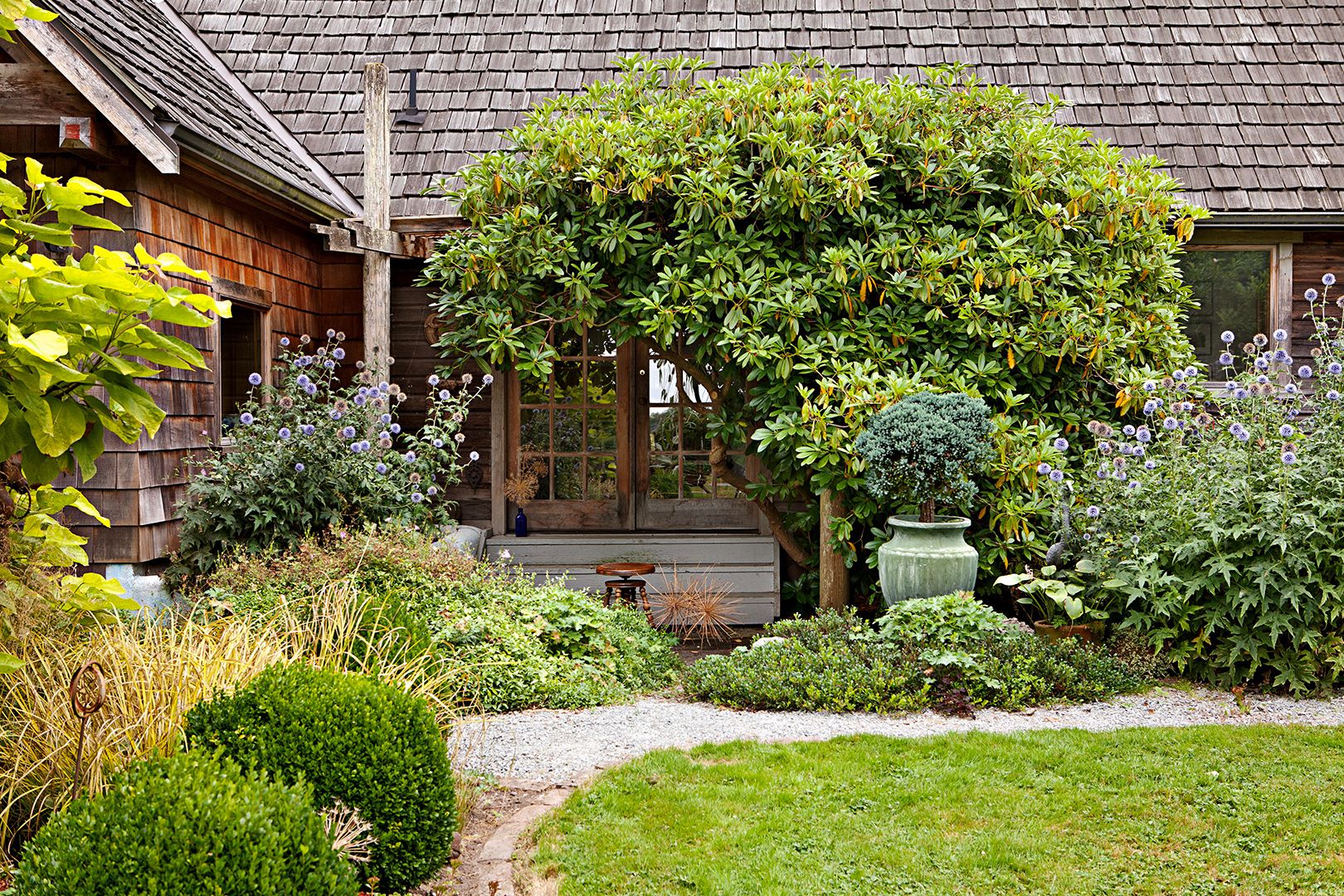
Radishes are among the fastest-maturing shade-tolerant vegetables, ready to harvest in just 25-30 days with 4-5 hours of sunlight. These crisp root vegetables work perfectly for impatient gardeners and succession planting.
Quick Growing Tips
Sow radish seeds directly every two weeks for continuous harvests. These cool-season crops appreciate partial shade, which slows growth slightly but prevents the spiciness and woodiness that excessive heat causes. Harvest when roots reach desired size, typically 1 inch in diameter.
14. Parsley: Essential Culinary Herb
Parsley excels as a shade-tolerant herb, thriving with just 3-4 hours of sunlight. Both flat-leaf and curly varieties grow well in partial shade, providing fresh herbs throughout the growing season for shade gardens.
Growing Parsley in Low Light
Start parsley from transplants rather than seeds for faster establishment. Space plants 6-8 inches apart in rich, well-draining soil. Parsley growing in shade develops slowly but produces tender, flavorful leaves. Harvest outer stems regularly to encourage bushy growth.
15. Cilantro: Cool-Season Herb
Cilantro is perfectly suited for shade gardening, preferring cooler conditions and partial sun that prevent premature bolting. This popular shade-loving herb adds fresh flavor to countless dishes while thriving in limited light.
Cultivation Tips
Plant cilantro in spring or fall, sowing seeds directly in garden beds with 3-4 hours of sunlight. Cilantro in partial shade remains productive longer, as shade prevents the quick bolting that hot sun triggers. Succession plant every 3 weeks for continuous harvests. Harvest leaves regularly, cutting outer stems first.
Maximizing Your Shade Garden’s Productivity
Creating a successful shade vegetable garden requires understanding plant needs and adapting your approach. Focus on cool-season crops and leafy vegetables that naturally prefer less intense conditions.
Soil Preparation for Shade Gardens
Shade-tolerant vegetables benefit from rich, well-amended soil since they have less energy from sunlight to work with. Add generous amounts of compost and organic matter to improve soil structure and nutrient availability. Well-prepared soil helps shade vegetables maximize the limited light they receive.
Watering Strategies
Shaded gardens typically retain moisture longer than sunny spots, reducing watering frequency. However, tree roots in shaded areas can compete for water. Monitor soil moisture regularly and water deeply when needed. Mulching helps retain moisture and suppress weeds that compete with your shade-loving vegetables.
Choosing the Right Vegetables
Success in shade gardening comes from selecting appropriate crops. Focus on leafy greens, root vegetables, and cool-season crops rather than fruiting plants. Vegetables that grow in partial shade include all varieties mentioned in this guide, plus Asian greens, endive, and Brussels sprouts.
Common Challenges and Solutions
Slower Growth Rates
Vegetables growing in shade develop more slowly than their sun-grown counterparts due to reduced photosynthesis. Extend your growing season by starting plants indoors or purchasing transplants. Accept that shade-tolerant crops may take 1-2 weeks longer to mature.
Pest and Disease Management
Shaded conditions can increase humidity and disease pressure. Ensure good air circulation by proper spacing and pruning nearby vegetation. Remove diseased leaves promptly and avoid overhead watering late in the day. Shade gardens often have fewer pest problems since many insects prefer sunny locations.
Nutrient Requirements
Since shade vegetables have less sunlight for photosynthesis, they rely more heavily on soil nutrients. Feed plants with balanced organic fertilizer every 3-4 weeks. Compost tea provides gentle nutrition perfect for shade-loving vegetables without risking nutrient burn.
Planning Your Shade Garden
Companion Planting
Combine shade-tolerant vegetables with complementary plants to maximize space and benefits. Plant lettuce beneath taller broccoli or kale for additional shade. Interplant quick-maturing radishes with slower-growing carrots to maximize bed productivity.
Succession Planting
Keep your shade garden productive by succession planting fast-growing crops like lettuce, arugula, and radishes every 2-3 weeks. As spring cool-season crops finish, replace them with shade-tolerant summer varieties, then transition back to cool-season crops for fall.
Container Gardening in Shade
Container gardening offers flexibility for shade vegetables, allowing you to move plants to capture available light. Use large containers (at least 12 inches deep) with quality potting mix. Leafy greens and herbs perform exceptionally well in shaded containers.
Seasonal Considerations
Spring Shade Gardening
Spring offers ideal conditions for shade vegetables as trees haven’t fully leafed out, providing more light. Plant cool-season crops like lettuce, spinach, peas, and radishes early. These shade-tolerant vegetables establish well before summer heat arrives.
Summer Shade Advantages
Partial shade becomes especially valuable during summer, protecting sensitive leafy vegetables from scorching heat. Lettuce, spinach, and arugula that would bolt in full sun remain productive in shaded gardens. Plant heat-sensitive crops in your shadiest spots for extended harvests.
Fall and Winter Crops
Fall gardens naturally have shorter days and lower light angles, making shade-tolerant vegetables essential. Plant kale, chard, cabbage, and Asian greens in late summer for fall and winter harvests. These cold-hardy vegetables continue producing in partial shade even as days shorten.
Also Read: Top Vegetables to Grow in Your Backyard
Conclusion
Growing vegetables in shade transforms challenging garden spaces into productive food sources. The 15 shade-tolerant vegetables featured in this guide prove that limited sunlight doesn’t mean limited harvests. From nutrient-dense leafy greens like lettuce, spinach, and kale to versatile root vegetables such as beets, carrots, and radishes, plus cool-season crops like broccoli, peas, and various herbs, your shaded garden can yield abundant, delicious produce.
Success comes from understanding your specific shade conditions, preparing nutrient-rich soil, selecting appropriate shade-loving vegetables, and adjusting expectations for slightly longer maturation times. Rather than viewing shade as a limitation, embrace it as an opportunity to grow cool-season crops that actually prefer protection from intense sunlight. With proper planning and variety selection, your shade garden can become one of your most productive growing spaces, providing fresh, homegrown vegetables throughout the entire growing season.


